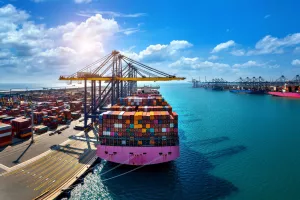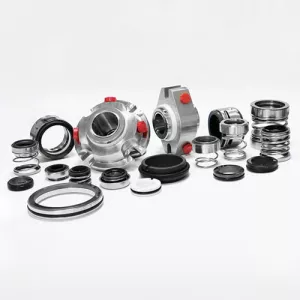What Safety Precautions Should You Take When Working with Hydraulic Cylinders?
Hydraulic cylinders are used for various tasks that involve pulling, lifting, bending, or holding. With so many ways they can be used, comes a lot that can go wrong.
.png)
To avoid the risk of harm while using such cylinders, there are many safety precautions you need to consider.
80% Rule
When it comes to setting up an optimal hydraulic system, your primary concern should always revolve around safety, both for yourself and others involved. When using hydraulic cylinders, it is advisable to limit usage to only 80% of the load and stroke ratings, as most loads are not lifted on their true centre, which introduces an external side load force and increases the risk of load instability.
Provide Support
For a cylinder to operate safely and efficiently, it necessitates to operate on a firm and level base. This implies that the cylinder's operation should be placed flat on the ground, i.e. stabilizer legs or outrigger on a crane. It's crucial to ensure that the surface beneath the cylinder is free from any debris. If you have any doubts about the stability of the surface, it's recommended to employ a base plate for added stability.
Pressure Gauge
A pressure gauge is a vital component of any hydraulic system. Using a pressure gauge helps to monitor the force applied on the cylinder within the reasonable margin of safety. This is not only important for safety, but it is also necessary for maintaining the quality of your equipment.
Cylinder Condition
Before using a hydraulic ram cylinder, it's crucial to inspect it for signs of damage. If any damage is detected, the cylinder may not function properly and should not be used. There are various reasons why a cylinder might not work correctly which could cause system failure that leads to safety hazards and injury.
Reasons why a cylinder may not function properly:
- A cylinder will not extend if the coupler is not fully tightened, the pump is worn, the oil level is too low, the pump is malfunctioning, or the pump pressure relief valve is set too low. Additionally, if the cylinder is already at full stroke, it will not extend further.
- If a cylinder only extends partially, this may be due to insufficient oil capacity or an external obstruction or bent rod.
- When a cylinder does not extend smoothly, it could be due to air in the system.
- If a cylinder extends but cannot hold the load, it may be due to leaking seals, a malfunctioning pump or valve, or a leaking connection.
- Cylinder leakage may occur due to cylinder or seal damage or a loose connecter.
- Cylinders may be slow to retract or not retract at all, this can be caused by a loose piston seal carrier or damaged piston seals, or worn hydraulic pump.
Replacing hydraulic cylinder seals and parts
FPE Seals provide replacement parts for all hydraulic cylinders and specialise in providing sealing solutions for aftermarket and OEM applications. View what is on offer on our website or contact one of our knowledgeable team today who are happy to advise on finding you exactly what you need.
What to read next...

What types of seals are used in the marine industry?
Read more
What are the benefits of mechanical seals?
Read moreSign up to our newsletter
Don't forget to subscribe to our newsletter to receive details of our latest special offers and new products.
Darlington
Telephone: +44 (0) 1325 282732 Email: sales@fpeseals.com
Doncaster
Telephone: +44 (0) 1302727252 Email: doncaster@fpeseals.com
Aberdeen
Telephone: +44 (0) 1224648999 Email: sales@swanseals.co.uk
The Netherlands
Telephone: +31 (0) 162581060 Email: info@fpeseals.com

